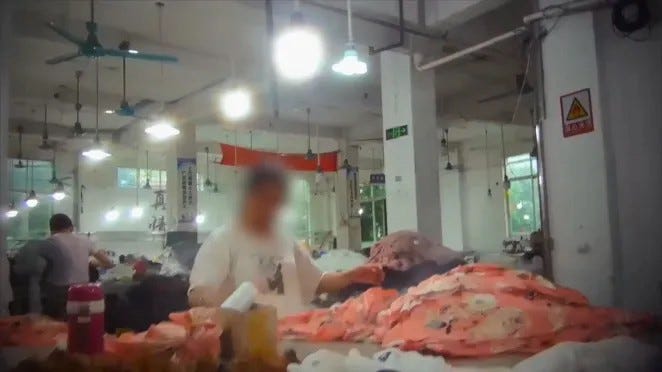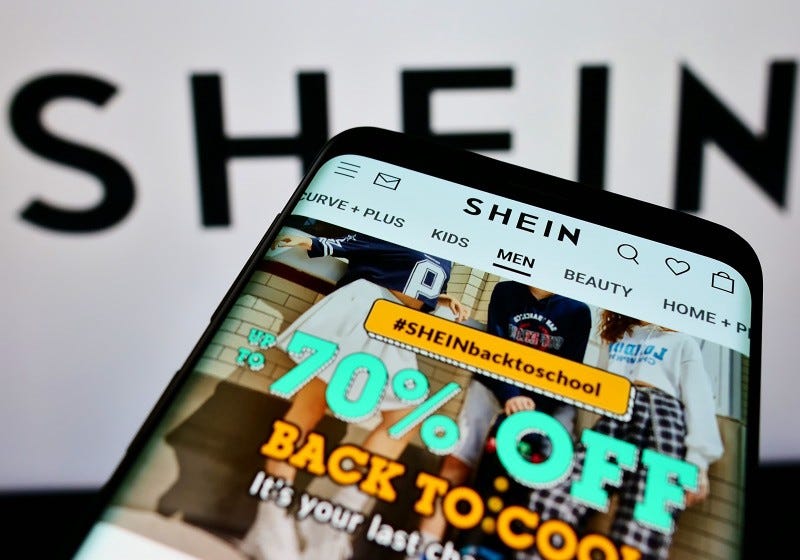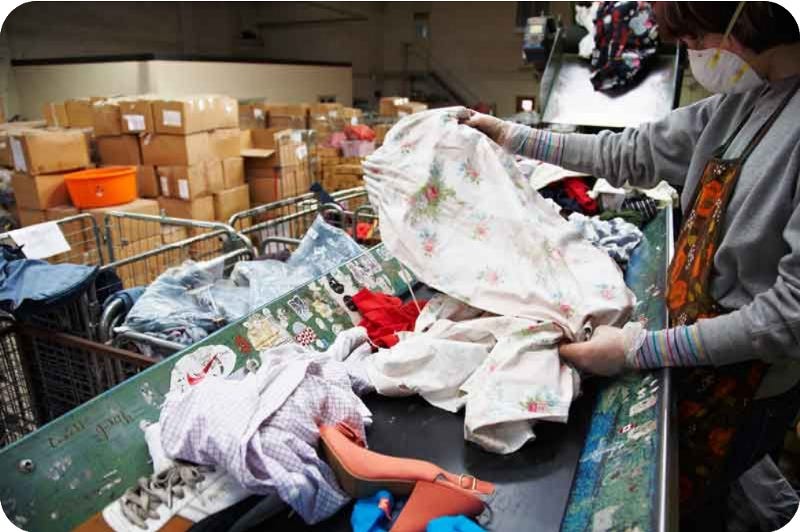5 key takeaways on fast fashion after watching Inside the SHEIN Machine.
5 key reasons why you should watch the Channel 4 commissioned exposé documentary, Untold: Inside the Shein Machine, and actions to take.
In case you have yet to watch this Channel 4 commissioned exposé documentary, Untold: Inside the Shein Machine, here are 5 key reasons why you should take 60 minutes out of your alternative watching to dive into this instead, and educate yourself on actions to take against the fast fashion system.
SHEIN is a fast-fashion retailer that became a TikTok sensation and is now reportedly worth £43 billion dollars. Mastering social media marketing to become a global fast fashion phenomenon, SHEIN’s business model is founded on just-in-time production of small batches to drive exclusivity and huge hauls. Their website plays on FOMO to increase average order value, and they work with influencers for cheap marketing — but with items as low as £1.49, many people (and the environment) are paying the price for “disposable clothing that can’t be disposed of”.

1. Standing up to the fashion production system is courageous.
This is an investigative piece from reporter Iman Amrani who along with undercover cameras, and importantly, a brave Chinese female who acts (and physically works) as a garment worker in two Guangzhou factories, bring to light what usually stays behind closed factory doors, and behind fashion production audits. As with (I’d say) all fast fashion brands, there is a lack of transparency and a destructive lack of care. It is only really when we see and hear truth can we give power to something that perhaps we were aware of, but turned the other way to. It’s easier that way.
This documentary really does give the inside scoop, and were the garment workers (that were involved either explicitly or subversively) physically caught, well, there would be repercussions. Many garment-producing countries and factories do curtail workers’ freedom of association through restrictive laws or outright union-busting actions, and subversive investigation would be considered as going against a worker’s “contract”.
You can learn from Clean Clothes Campaign in ‘Union Busting’ about how being allowed to take collective action and negotiate better working conditions has an impact of the wider fashion supply chain. There are 15 million garment workers in China alone.
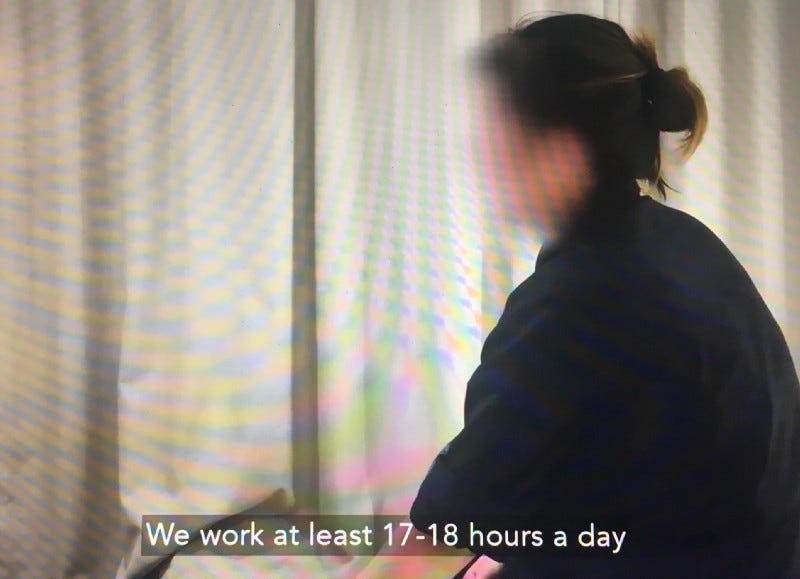
2. Labour laws are being broken.
The documentary exposes how SHEIN’s production facilities break Chinese labour laws, through excerpts from garment workers who reveal they do not get the Sundays off as per contracts, and that they generally work 18 hours per day. According to China’s labour laws, workers are allowed to clock in a maximum of 40 hours per week, but women were captured washing their hair during their lunch break because they don’t have time when at home. Workers additionally can choose to stay in dorms to save travelling time. Because Shein’s production model is just-in-time, they will produce a whole line in a day, and this causes the migrant garment workers to stay.
SHEIN’s sustainability report (yes, as a fast fashion brand they still need to show they’re doing something) addressed 700+ suppliers and found that 83% needed immediate action. When it comes to factory auditing, a third-party needs to physically go in, but what has been found for a multitude of brands, is that their production facility only shows a segment of a factory. Brands will then say their facility is subcontracting and so they’re the ones at fault, rather than holding themselves accountable.
There was a time when the Ethical Trading Initiative was being jumped on by retailers as a sort of PR bandwagon, with for example, the Arcadia group openly saying “yes, we follow the base code” but being found to mislead and under-operate when it came to ethical best practice. The ETI Base Code still exists, working to improve conditions and influence key players to take action against horrific labour practices.
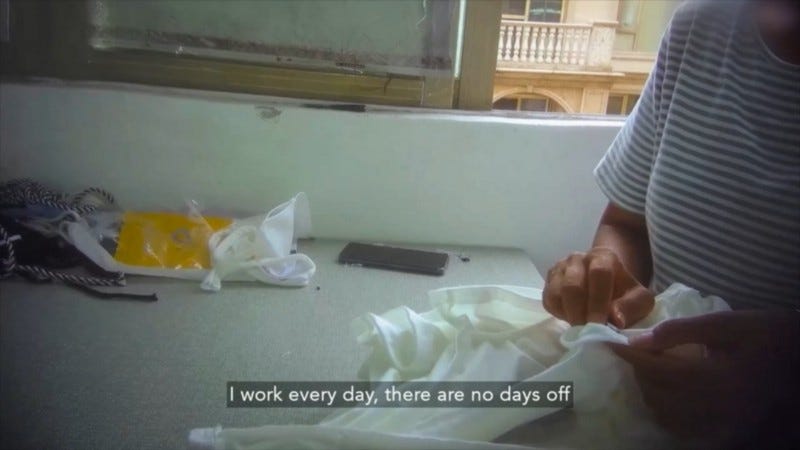
3. Wages and buying practices are sustaining poverty.
In the second of the factories investigated, we discover that there is no base rate — so for instance, you earn a daily base rate and then a “commission” for each item made or checked or packed (whatever your role is). Depending on which factory a worker works at, the rate of pay will differ i.e. whether there is a base rate or not, and what the piece rate is too. This wage is up to the factory owner, rather than the retailer, and isn’t necessarily influenced by the retailer because price negotiations will happen regardless. The rule for how much earnings are docked due to damages is also up to the factory owner.
As mentioned above, because SHEIN operate on a small quantity quick turnaround model, workers are encouraged to stay until the line is complete. It is not unusual for retailers to drive prices per consignment down to increase their margin; if you watched the documentary Inside Missguided: Made in Manchester, also on Channel 4, you’ll recognise these buying practices, and understand the negotiations that occur to bring prices down as you go upstream in the supply chain. It doesn’t even start to draw on how this affects wages for fabric or fibre producers though.
The Sustainable Terms of Trade Initiative launched in 2021 and created by the International Apparel Federation, Better Buying Practices and the STAR Network, establishes a guide to fairer purchasing practices in the global apparel industry. This article from Vogue Business gives a great overview of what affects purchasing practices and the negative impact they can have, Changing Fashion’s Buying Practices, from poor forecasting to order cancellations.
Learn more about transparent supply chains from the Clean Clothes Campaign, Labour Behind The Label, and Fashion Revolution’s Fashion Transparency Index 2022.
4. You, as a customer, are being manipulated.
The SHEIN website is vibrant, drawing in visitors into an infinite scroll where they are lured into “dark patterns” that increase the chance of impulsive buys. From free shipping on a total minimum spend, to a countdown discount clock, to limited stock notifications, to a returns policy that allows you to be refunded and keep the items, one influencer during their haul video explained they didn’t even want the piece but it was cheaper to get it than not (it actually ended up free). As stated in a quote in the opening paragraph above, these clothes are intended to be disposable, and customers know it. So it was (and is) absolutely ridiculous that days after the documentary aired, SHEIN launched resale platform SHEIN Exchange in the US market.
This app pre-populates customers’ previous purchases to streamline the resale process, anticipating the one-wear mentality. The business hopes to bring secondhand sales back into its own ecosystem, while allowing users to promote “the environmental benefits of purchasing secondhand clothing”, and shortening the delivery time by offering customers garments already produced and available in the same country. The thing is, it’s not going to stop SHEIN from continuing to produce new, so exacerbating the issues above.
5. Independent designers are being stolen from, and we can’t afford to shop ethically.
One segment looks at lingerie designer Fern Davey, who creates at home by hand one-off underwear sets using organic cotton jersey. SHEIN ripped off this design and sold it for £4, while Fern sold it for £65. What Fern questioned with this was not necessarily the frustration of an obvious theft, but that our living wages (even in the UK) are not enough to allow us to purchase clothing made ethically. Unless you do have a strong conviction (and awareness, and education), and the disposable income, then of course you’re more likely to go for the £4 set over the £65 set.
Alongside this was a segment covering TRAID, a charity working to stop clothes from being thrown away. According to the representative at the sorting facility, 3500 tons of clothing each year are disposed of (this was likely a figure from WRAP’s Sustainable Clothing Action Plan 2020 (SCAP) or the Valuing Our Clothes: The Cost of UK Fashion report). With fast production and low pricing comes a degradation in material and making quality, so realistically there is no second-hand market for fast clothing items — which furthers the greenwashing of SHEIN’s “sustainability” moves — as preloved clothing cannot be sold cheaper than the cheap garments, so no one purchases, so they go to landfill or incineration (not recycling because the materials are poor quality). There is an obvious shift required to push away from purchasing fast to purchasing quality, but then we’re back again at how we simply cannot afford to have such values.
So what actions can you take?
1. Firstly, watch the documentary to build awareness. Add to the perspective by additionally watching the Missguided series linked above, The True Cost on Waterbear and the 5 minute op-doc The Deadly Cost of Fashion about the Rana Plaza factory collapse. You could also watch Stacey Dooley Investigates: Fashion’s Dirty Secrets — I found this insightful and captivating at least, but not everyone is a Stacey fan. There are more documentaries, but that’s a start for when it comes to addressing worker rights and production-specific issues.
2. Next, call out SHEIN on social media. Share the story of why you believe fast fashion needs to stop. Start conversations with people who may not yet be enlightened.
3. Additionally, look up the links above regarding campaigns, reports and petitions that you can actively engage with. There are a bunch of organisations to support who will educate you. {I’ll follow up with content surrounding this, so do follow me}.
4. Also, look at the business you work in and whether your purchasing practices and laws and regulations are as transparent as they seem. It will be tricky to look into them and call them out, but perhaps there is something you can do in business rather than as a consumer.
5. And simply, don’t shop with fast fashion giants. Switch your own purchasing practices to less and better, to repair, to buying secondhand, or not buying at all.
Let me know with comments as to how you found the documentary. What were your key takeaways? What will you be implementing your personal life or business life? What further information do you need to have more awareness and understanding of the fashion industry?
Originally published at https://www.linkedin.com and can also be found on Medium.




